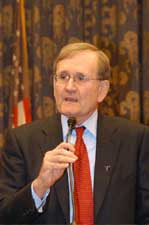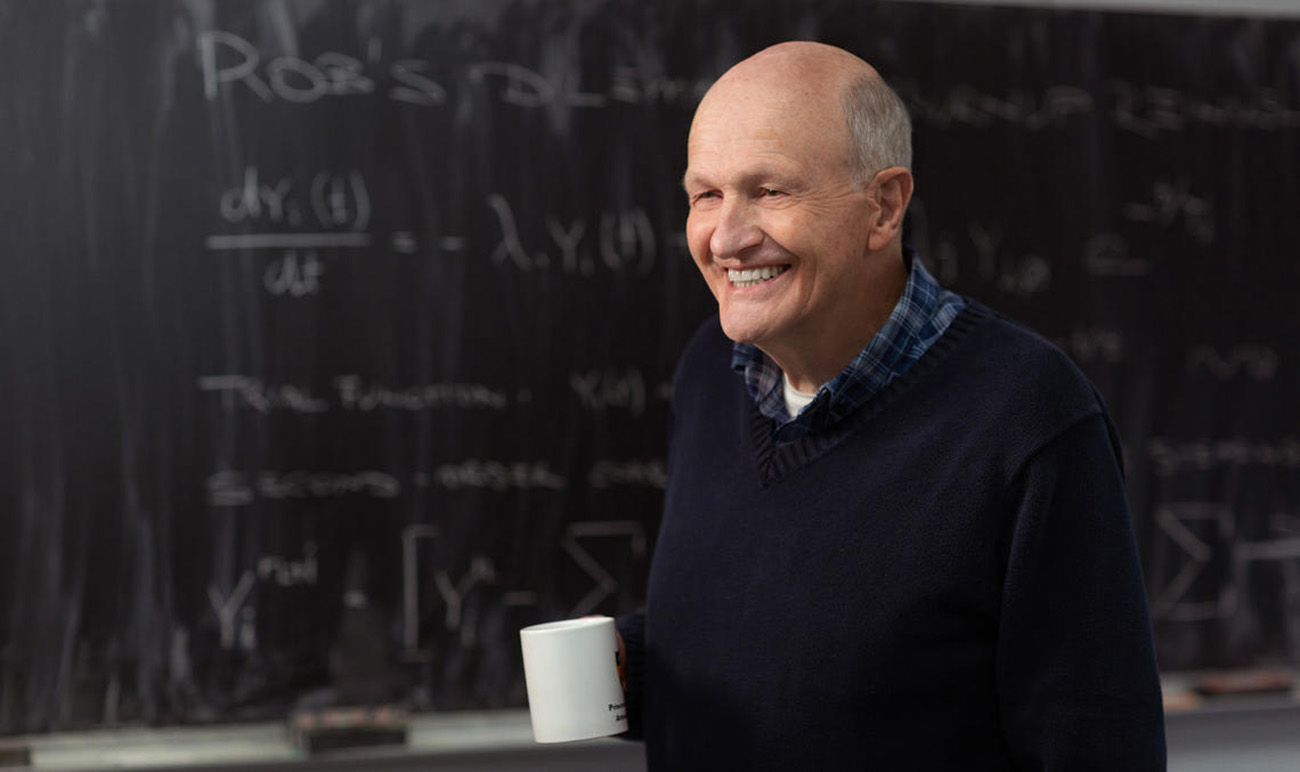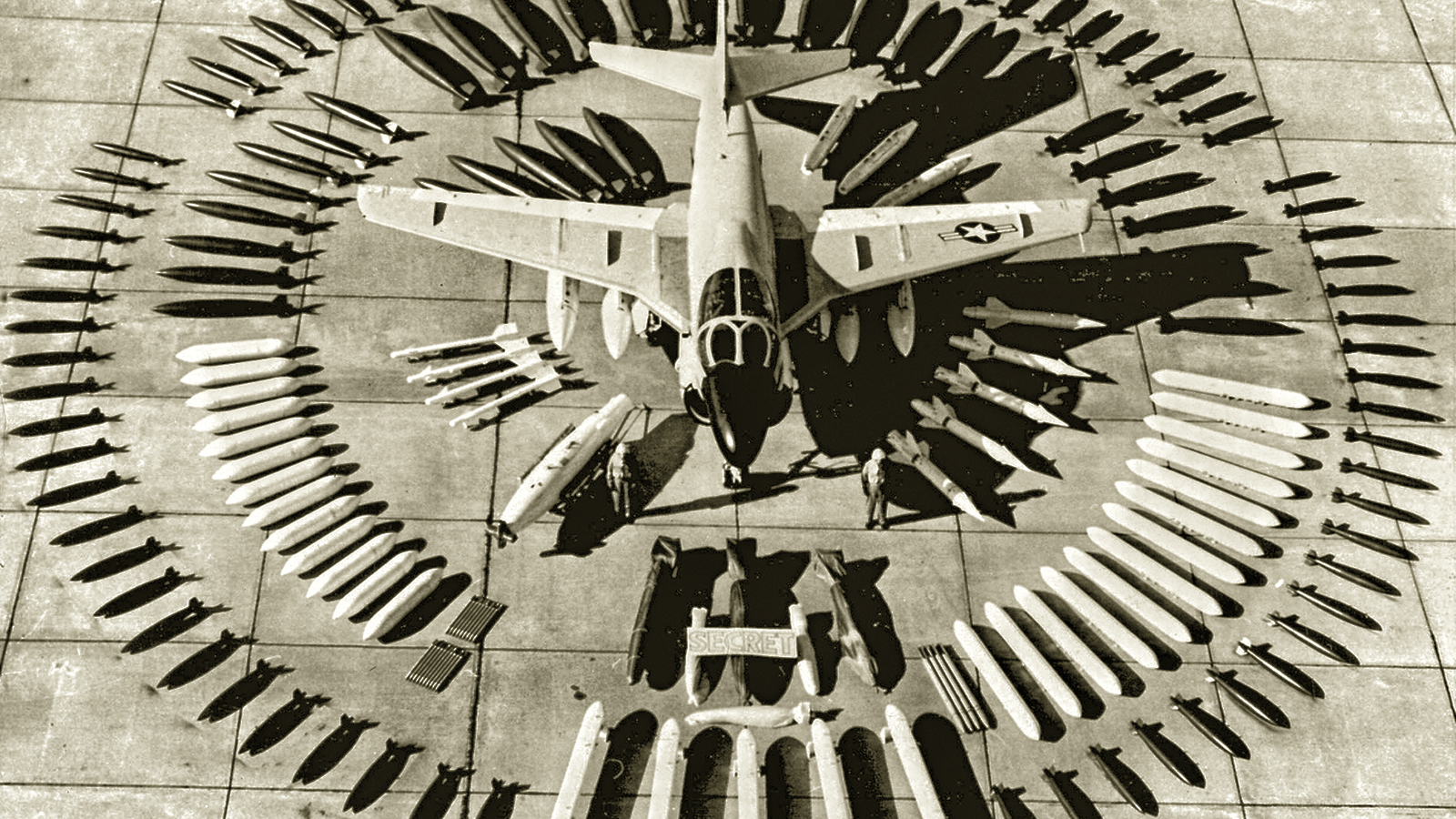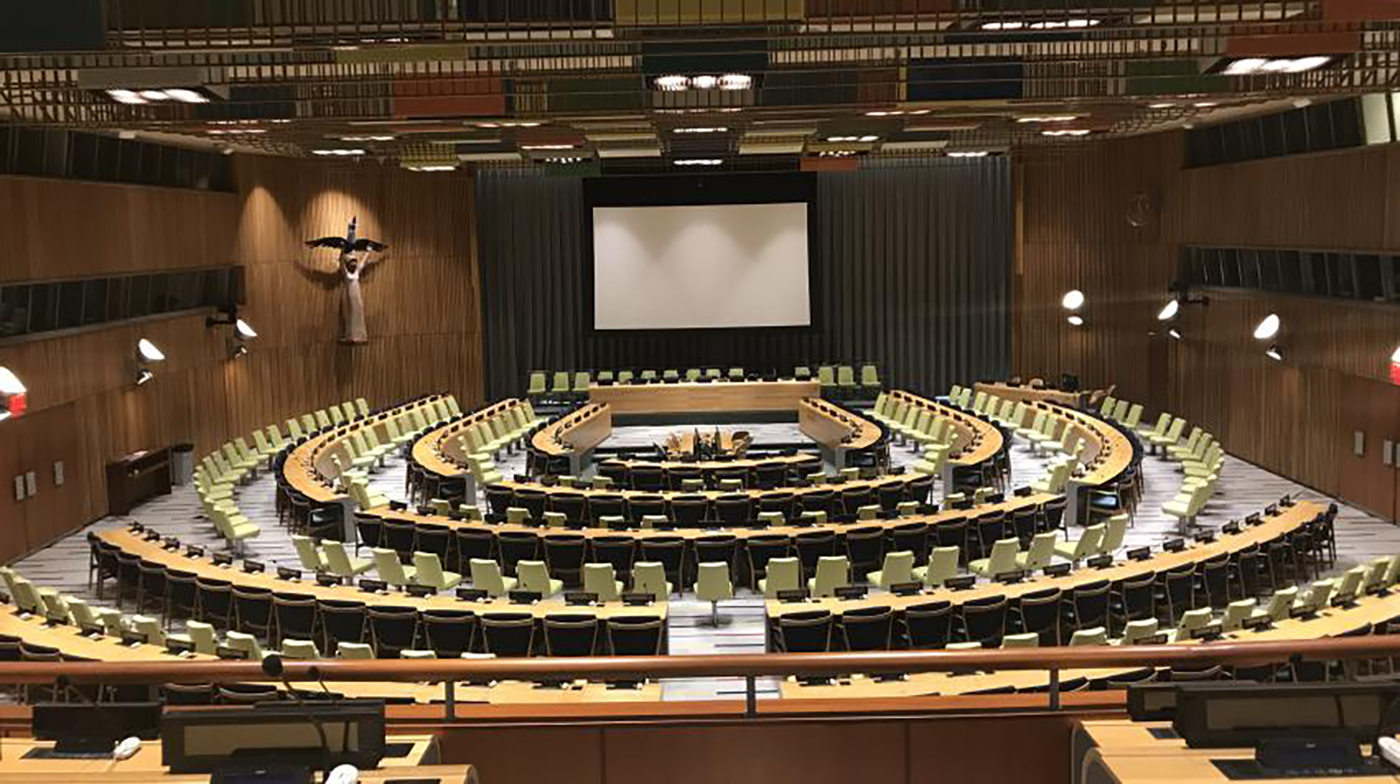|
January 21, 2008
On January 15, former Secretaries of State George Schultz and Henry Kissinger, former Secretary of Defense William Perry and former Senator Sam Nunn published their second widely-circulated op/ed in the Wall Street Journal calling for the control and abolition of nuclear weapons. As a former US administration official who participated in the Hoover Institute conferences that produced these op/eds, I am happy to share these newest of these two remarkable pieces with you: » Read “Toward a Nuclear-Free World,” January 15, 2008 op/ed Support for the goal of the elimination of nuclear weapons by these senior statesmen put to rest the notion that those who advocate the worldwide elimination of nuclear weapons are radical idealists or, at worst, anti-American. Even more useful, they articulated a path for how we will achieve nuclear abolition, a path that many of us in the arms control community have helped to identify through our own respective institutions and projects, such as the Middle Powers Initiative’s Article VI Forum. Having worked on these issues for the past 30 years, it is heartening to see these measures—such as extending key provisions of the Strategic Arms Reduction Treaty, increasing the warning and decision times for the launch of nuclear weapons, and bringing the Comprehensive Test-Ban Treaty into force—gaining serious traction in Washington and elsewhere. It is important to recognize the myriad of ways in which all of us have contributed to this growing momentum for nuclear disarmament. I myself am fortified by the efforts of the Hoover group, and am pleased with how these efforts are buttressing the ongoing work of groups like the Global Security Institute, and I look forward to continuing to advocate, through the Bipartisan Security Group and elsewhere, for a safer, saner world free from the threat of nuclear weapons. Sincerely,
Ambassador (Ret.) Thomas Graham, Jr.
» Click here for a PDF version of the 2008 op/ed By GEORGE P. SHULTZ, WILLIAM J. PERRY, HENRY A. KISSINGER and SAM NUNN Click here for a PDF version of this op/ed The accelerating spread of nuclear weapons, nuclear know-how and nuclear material has brought us to a nuclear tipping point. We face a very real possibility that the deadliest weapons ever invented could fall into dangerous hands. The steps we are taking now to address these threats are not adequate to the danger. With nuclear weapons more widely available, deterrence is decreasingly effective and increasingly hazardous. One year ago, in an essay in this paper, we called for a global effort to reduce reliance on nuclear weapons, to prevent their spread into potentially dangerous hands, and ultimately to end them as a threat to the world. The interest, momentum and growing political space that has been created to address these issues over the past year has been extraordinary, with strong positive responses from people all over the world. Mikhail Gorbachev wrote in January 2007 that, as someone who signed the first treaties on real reductions in nuclear weapons, he thought it his duty to support our call for urgent action: “It is becoming clearer that nuclear weapons are no longer a means of achieving security; in fact, with every passing year they make our security more precarious.” In June, the United Kingdom’s foreign secretary, Margaret Beckett, signaled her government’s support, stating: “What we need is both a vision — a scenario for a world free of nuclear weapons — and action — progressive steps to reduce warhead numbers and to limit the role of nuclear weapons in security policy. These two strands are separate but they are mutually reinforcing. Both are necessary, but at the moment too weak.” We have also been encouraged by additional indications of general support for this project from other former U.S. officials with extensive experience as secretaries of state and defense and national security advisors. These include: Madeleine Albright, Richard V. Allen, James A. Baker III, Samuel R. Berger, Zbigniew Brzezinski, Frank Carlucci, Warren Christopher, William Cohen, Lawrence Eagleburger, Melvin Laird, Anthony Lake, Robert McFarlane, Robert McNamara and Colin Powell. Inspired by this reaction, in October 2007, we convened veterans of the past six administrations, along with a number of other experts on nuclear issues, for a conference at Stanford University’s Hoover Institution. There was general agreement about the importance of the vision of a world free of nuclear weapons as a guide to our thinking about nuclear policies, and about the importance of a series of steps that will pull us back from the nuclear precipice. The U.S. and Russia, which possess close to 95% of the world’s nuclear warheads, have a special responsibility, obligation and experience to demonstrate leadership, but other nations must join. Some steps are already in progress, such as the ongoing reductions in the number of nuclear warheads deployed on long-range, or strategic, bombers and missiles. Other near-term steps that the U.S. and Russia could take, beginning in 2008, can in and of themselves dramatically reduce nuclear dangers. They include: • Take steps to increase the warning and decision times for the launch of all nuclear-armed ballistic missiles, thereby reducing risks of accidental or unauthorized attacks. Reliance on launch procedures that deny command authorities sufficient time to make careful and prudent decisions is unnecessary and dangerous in today’s environment. Furthermore, developments in cyber-warfare pose new threats that could have disastrous consequences if the command-and-control systems of any nuclear-weapons state were compromised by mischievous or hostile hackers. Further steps could be implemented in time, as trust grows in the U.S.-Russian relationship, by introducing mutually agreed and verified physical barriers in the command-and-control sequence. • Discard any existing operational plans for massive attacks that still remain from the Cold War days. Interpreting deterrence as requiring mutual assured destruction (MAD) is an obsolete policy in today’s world, with the U.S. and Russia formally having declared that they are allied against terrorism and no longer perceive each other as enemies. • Undertake negotiations toward developing cooperative multilateral ballistic-missile defense and early warning systems, as proposed by Presidents Bush and Putin at their 2002 Moscow summit meeting. This should include agreement on plans for countering missile threats to Europe, Russia and the U.S. from the Middle East, along with completion of work to establish the Joint Data Exchange Center in Moscow. Reducing tensions over missile defense will enhance the possibility of progress on the broader range of nuclear issues so essential to our security. Failure to do so will make broader nuclear cooperation much more difficult. • Dramatically accelerate work to provide the highest possible standards of security for nuclear weapons, as well as for nuclear materials everywhere in the world, to prevent terrorists from acquiring a nuclear bomb. There are nuclear weapons materials in more than 40 countries around the world, and there are recent reports of alleged attempts to smuggle nuclear material in Eastern Europe and the Caucasus. The U.S., Russia and other nations that have worked with the Nunn-Lugar programs, in cooperation with the International Atomic Energy Agency (IAEA), should play a key role in helping to implement United Nations Security Council Resolution 1540 relating to improving nuclear security — by offering teams to assist jointly any nation in meeting its obligations under this resolution to provide for appropriate, effective security of these materials. As Gov. Arnold Schwarzenegger put it in his address at our October conference, “Mistakes are made in every other human endeavor. Why should nuclear weapons be exempt?” To underline the governor’s point, on Aug. 29-30, 2007, six cruise missiles armed with nuclear warheads were loaded on a U.S. Air Force plane, flown across the country and unloaded. For 36 hours, no one knew where the warheads were, or even that they were missing. • Strengthen the means of monitoring compliance with the nuclear Non-Proliferation Treaty (NPT) as a counter to the global spread of advanced technologies. More progress in this direction is urgent, and could be achieved through requiring the application of monitoring provisions (Additional Protocols) designed by the IAEA to all signatories of the NPT. • Adopt a process for bringing the Comprehensive Test Ban Treaty (CTBT) into effect, which would strengthen the NPT and aid international monitoring of nuclear activities. This calls for a bipartisan review, first, to examine improvements over the past decade of the international monitoring system to identify and locate explosive underground nuclear tests in violation of the CTBT; and, second, to assess the technical progress made over the past decade in maintaining high confidence in the reliability, safety and effectiveness of the nation’s nuclear arsenal under a test ban. The Comprehensive Test Ban Treaty Organization is putting in place new monitoring stations to detect nuclear tests — an effort the U.S should urgently support even prior to ratification. In parallel with these steps by the U.S. and Russia, the dialogue must broaden on an international scale, including non-nuclear as well as nuclear nations. Key subjects include turning the goal of a world without nuclear weapons into a practical enterprise among nations, by applying the necessary political will to build an international consensus on priorities. The government of Norway will sponsor a conference in February that will contribute to this process. Another subject: Developing an international system to manage the risks of the nuclear fuel cycle. With the growing global interest in developing nuclear energy and the potential proliferation of nuclear enrichment capabilities, an international program should be created by advanced nuclear countries and a strengthened IAEA. The purpose should be to provide for reliable supplies of nuclear fuel, reserves of enriched uranium, infrastructure assistance, financing, and spent fuel management — to ensure that the means to make nuclear weapons materials isn’t spread around the globe. There should also be an agreement to undertake further substantial reductions in U.S. and Russian nuclear forces beyond those recorded in the U.S.-Russia Strategic Offensive Reductions Treaty. As the reductions proceed, other nuclear nations would become involved. President Reagan’s maxim of “trust but verify” should be reaffirmed. Completing a verifiable treaty to prevent nations from producing nuclear materials for weapons would contribute to a more rigorous system of accounting and security for nuclear materials. We should also build an international consensus on ways to deter or, when required, to respond to, secret attempts by countries to break out of agreements. Progress must be facilitated by a clear statement of our ultimate goal. Indeed, this is the only way to build the kind of international trust and broad cooperation that will be required to effectively address today’s threats. Without the vision of moving toward zero, we will not find the essential cooperation required to stop our downward spiral. In some respects, the goal of a world free of nuclear weapons is like the top of a very tall mountain. From the vantage point of our troubled world today, we can’t even see the top of the mountain, and it is tempting and easy to say we can’t get there from here. But the risks from continuing to go down the mountain or standing pat are too real to ignore. We must chart a course to higher ground where the mountaintop becomes more visible. Mr. Shultz was secretary of state from 1982 to 1989. Mr. Perry was secretary of defense from 1994 to 1997. Mr. Kissinger was secretary of state from 1973 to 1977. Mr. Nunn is former chairman of the Senate Armed Services Committee. The following participants in the Hoover-NTI conference also endorse the view in this statement: General John Abizaid, Graham Allison, Brooke Anderson, Martin Anderson, Steve Andreasen, Mike Armacost, Bruce Blair, Matt Bunn, Ashton Carter, Sidney Drell, General Vladimir Dvorkin, Bob Einhorn, Mark Fitzpatrick, James Goodby, Rose Gottemoeller, Tom Graham, David Hamburg, Siegfried Hecker, Tom Henriksen, David Holloway, Raymond Jeanloz, Ray Juzaitis, Max Kampelman, Jack Matlock, Michael McFaul, John McLaughlin, Don Oberdorfer, Pavel Podvig, William Potter, Richard Rhodes, Joan Rohlfing, Harry Rowen, Scott Sagan, Roald Sagdeev, Abe Sofaer, Richard Solomon, and Philip Zelikow.
|








